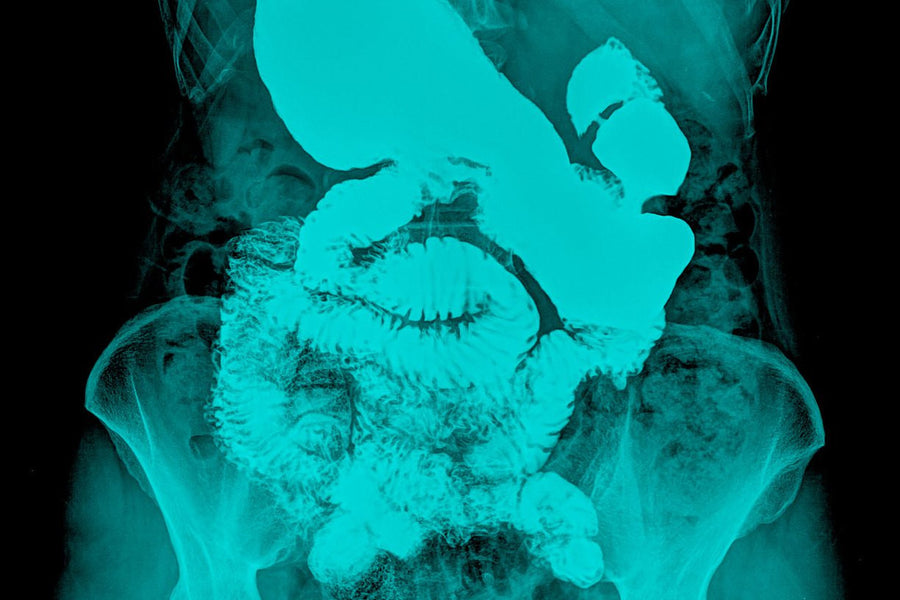
Whenever someone who doesn’t know me quizzes me about what I do, I often find myself talking to a person’s raised eyebrows. As I explain that I’m a journalist who researches the connection between our mind, body and health, I usually find that I’m met with skepticism at best and cynicism at worst. Since releasing my film about the subject, I’ve met countless others working in this space who experience the same frustration. In a world full of quackery, it can be hard to cut through with real science. Over the years I’ve developed a few ‘go-to’ examples of the new science of the mind body connection to explain what I’m on about and for this blog post I thought I’d share one of them.
In 1899 two English scientists named William Bayliss and Ernest Starling were studying the gut of an anaesthetised dog when they made an intriguing observation. The physiologists had been working together to study the movements and contractions in the digestive tract, which moved food from one place to another. They had called this effect the ‘law of the intestine’ and believed that nerves were responsible for coordinating this automatic function. What was interesting in the particular dog they were studying was that when they cut communication between the gut and the central nervous system, their ‘law of the intestine’ still prevailed. In other words, Bayliss and Starling had discovered that the gut can still perform its duties if it’s not talking to the brain.
Unfortunately the world would more or less forget about the discovery of this independently functioning nervous system for a hundred years or so and we continued along as though the brain was an all mighty dictator of bodily function and the single determinate of all things emotional. But in 1998 Michael Gershon, a Professor at Columbia University published a landmark book called The Second Brain: Your Gut Has a Mind of Its Own and the game changed.
The book was part memoir and part detailed explanation of Gershon’s discovery of the neurochemistry of what he called the second brain. The book’s publication and Gershon’s subsequent appearances on television talk shows and in mainstream magazine feature articles finally gave the remarkable second brain the notoriety it deserved. Gershon is regarded as the father of the field now known as neurogastroenterology.
Through the work of Gershon and others, we have come to understand that deep within our gut walls lies an enteric nervous system which can not only talk to our brain, but it also has the ability to act independently and can influence our behavior. In fact, about 90 percent of the signals passing along the nerve that connects your brain to your gut come not from above, but from the second brain below. Although you are not conscious of your second brain thinking and it is unlikely to ever write a sonnet or invent a rocket ship, a compelling body of research is demonstrating that the second brain has a good deal of influence on our every day lives.
I’ve written before about the second brain’s influence on our mood after my own experience of the hangries – when hunger and anger combine to create a potentially lethal combination. It turns out this is partly because our gut-brain produces a hormone called ghrelin (or as I like to call it, gremlin) to tell the brain in your head to eat something, fast.
This week I was intrigued to come across more research, which further illustrates the power this second brain has over our mood. The study led by Lukas Van Oudenhove at the University of Leuven, Belgium asked a dozen healthy people to fast for 12 hours before they were injected with either saline solution or a fatty acid solution directly into their stomach.
For the next 30 minutes, the researchers played them classical music and showed them emotive images on a screen while observing what happened in their brains as they lay under an FMRI scanner. They found that people given the fatty acid injection reacted less strongly to sadness. In fact their emotional responses were almost half that of the people given the saline injection. Though the study was small, it’s interesting that the results are on par with the effects of pharmacological antidepressants on mood scores. The study may explain why some of us reach for particular comfort foods during time of emotional upheaval and is another significant step towards explaining the relationship between our brain and gut as bi-directional. The brain talks to the gut and the gut talks back.
I’ve spent the last few years diving deep into the latest research demonstrating the link between our mind and body and am still stunned by the emerging evidence on the second brain in our gut. I thoroughly enjoy having conversations with the uninitiated and love watching the source of their raised eyebrows turn from skepticism to surprise and even intrigue. Given that this is just one example of the latest science proving mind body connection though, you might want to make sure you have some time on your hands before you get me started on the subject of evidence based mind body medicine.





 The Connection (DOWNLOAD-TO-OWN)
The Connection (DOWNLOAD-TO-OWN) My Year Of Living Mindfully - Book
My Year Of Living Mindfully - Book




